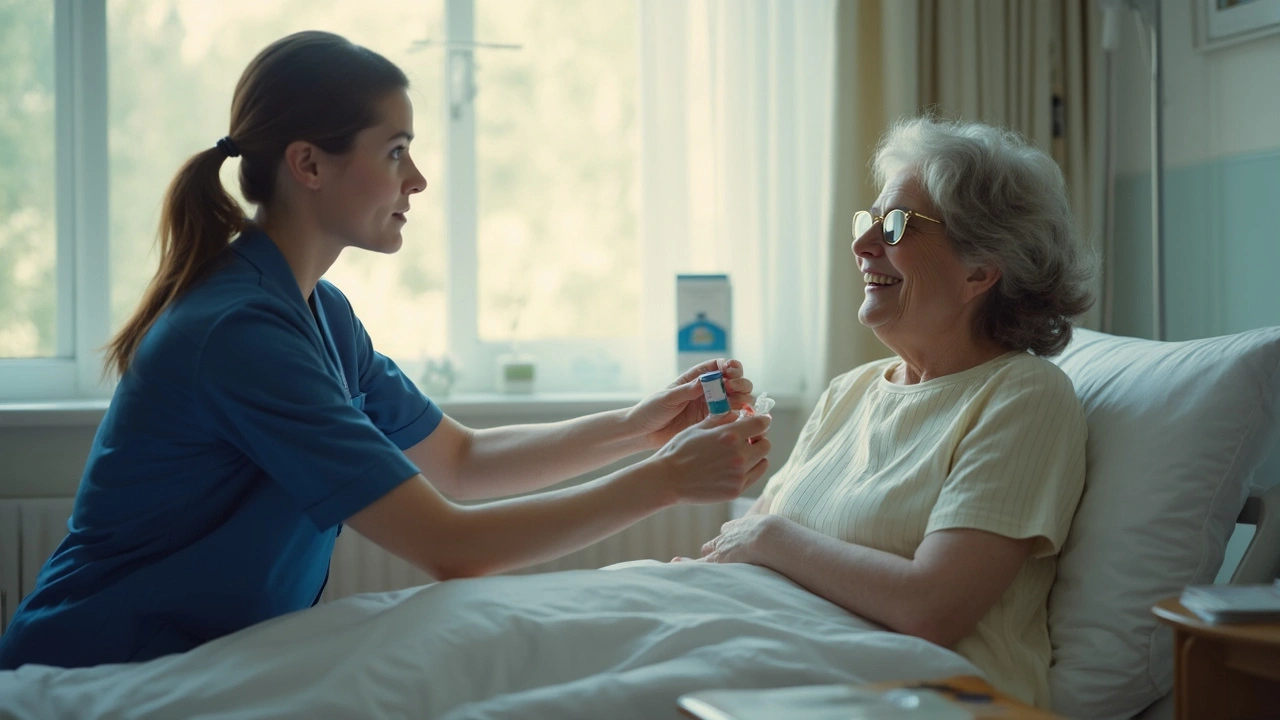Kytril: Guide to Uses, Side Effects & Tips for Nausea Relief
17 Jun, 2025All you need to know about Kytril (granisetron)—how it works, uses for nausea, side effects, and practical advice for patients and caregivers.
READ MORENausea during chemo is common, but you don’t have to suffer through it. Knowing why it happens and which steps help can cut down how often you feel sick and make treatments more bearable. Below are clear, practical strategies patients use every day.
Chemo can trigger nausea in different ways. Acute nausea shows up within 24 hours of treatment. Delayed nausea starts a day or two later and can last several days. There’s also anticipatory nausea — that’s anxiety-driven, happening before a treatment because you expect to feel sick. Risk depends on the chemo drugs used, dose, prior motion sickness or pregnancy-related nausea, and even age (younger people often feel it worse).
Your oncology team will often prescribe a mix of anti-nausea drugs. Common ones include 5-HT3 blockers like ondansetron, NK1 blockers like aprepitant, dexamethasone, and sometimes olanzapine. The best results usually come from taking medicines exactly as prescribed: start them before chemo if advised and keep taking them at the right times after treatment. Missing doses is a common cause of breakthrough nausea.
If nausea happens despite meds, call your care team. They can adjust doses, switch drugs, or add options like a rescue antiemetic. Don’t stop or mix prescription meds without checking — some combinations can cause problems.
There are also non-drug tools that work well alongside meds. Try ginger (candied ginger, ginger tea, or a supplement after you check with your doctor), small bland meals, and staying hydrated with sips of clear fluids. Avoid greasy, spicy, or strong-smelling foods. Eating several small snacks instead of big meals often helps.
Relaxation techniques help, especially for anticipatory nausea. Deep breathing, guided imagery, short walks, or listening to calm music can lower anxiety and reduce symptoms. Some people get relief from acupressure at the P6 (Neiguan) point on the inner wrist — you can try a pressure band or press the point for a few minutes when nausea starts.
Keep a simple symptom log: note when nausea starts, what you ate, which meds you took, and how long it lasted. This helps your oncology team tweak your plan quickly. If nausea prevents you from eating or drinking, or if you have severe vomiting, call right away — dehydration and electrolyte issues can become serious.
Finally, talk openly with your care team about past reactions to meds, motion sickness, or pregnancy-related nausea. That history helps them pick the most effective anti-nausea combo for you. Small changes — the right meds, timing, meals, and stress management — often make a big difference in comfort during chemotherapy.

All you need to know about Kytril (granisetron)—how it works, uses for nausea, side effects, and practical advice for patients and caregivers.
READ MORE